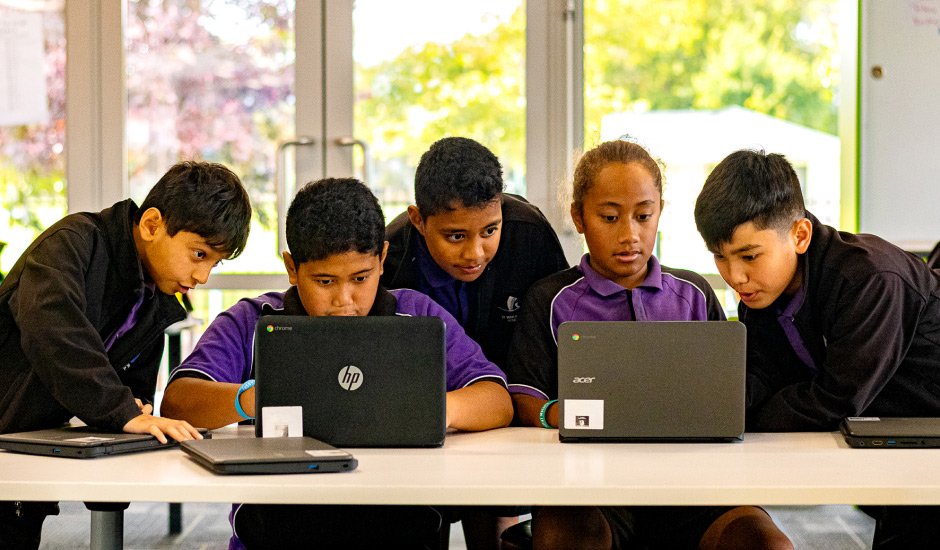Back to Basics or Backwards Thinking? Education changes ignore the digital age
Fact is - We need to prepare every student for a future working with technology. While digital tools cannot replace effective teaching, they offer powerful support in accelerating the acquisition of foundational skills across all subjects.
Our new coalition government are (quite rightly) concerned about the achievement of New Zealand students in what are described as the three core subjects - reading, writing and mathematics - often referred to as the 3 R’s. They have introduced compulsory time blocks for the teaching of these subjects and new achievement measurement mechanisms.
Source digitalfutureaotearoa.nz
This relentless focus on these core subjects is coupled with a complete lack of recognition of the importance to our economy and future workforce of teaching what we’ve traditionally called STEM or STEAM subjects - science, technology, engineering, arts and mathematics.
It’s not just Digital Technologies who are crying out for enhanced focus on STEAM and worried about our future workforce - Architects, Electrical Engineers, Concrete Engineers, Civil Engineers, Scientific Researchers etc etc are all worried that our current compulsory education system is not oriented to prepare us for the workforce we need in the near or longer term.
3R’s AND STEAM
To increase levels of achievement in reading, writing and mathematics can be taught through integration of science, technology, engineering and arts into the curriculum and teaching methods - we can have the 3Rs AND STEAM but this needs focused effort.
Our compulsory education system allows for project based learning / problem based learning which creates an opportunity to increase levels of achievement in reading, writing and mathematics while incorporating science, arts and engineering constructs and utilising digital technology.
One high school principal once told me that project based learning using digital technologies for their research, design, developing theories, visualising results, writing reports or developing websites etc etc was “leap frogging” learners basic skill development - in the 3R’s. His school found this approach was improving reading ages and comprehension, improving writing skills and he talked at length about the power of exploring datasets in improving mathematical understanding - in ways the learners don’t realise they are also learning the basics.
I saw this for myself in a school visit where a 10 year old girl was explaining the correlation between the temperature of the air, temperature of the soil and growth of her sunflower seeds - where she was collecting temperature data via an iOT (internet of things) device, measuring her sunflowers growth with a ruler and producing very beautiful graphs to demonstrate her findings. I had no idea what a correlation was aged 10, this blew my mind.
So what?
What I am trying to say is - incorporating STEAM and integrating digital technology into the classroom we can increase learner engagement, personalise learning outcomes, improve access to materials, develop dearly needed team / collaboration based learning skills, develop digital literacy skills, problem solving skills - the positives are extensive.
Importantly we would also be preparing a pipeline of learners who are armed with the abilities needed to enter into STEAM based higher education and roles.
Remember this graphic? Of 351,863 learners in high school only 41,544 took Level 3 Mathematics, 15,365 took NCEA Technology standards and 5,642 took Digital Technology standards.
Yet the industry tells us we have a critical skills shortage. We are not good at predicting growth of the sector here in Aotearoa but Australia has boldly predicted theirs to need 1.2 Million workers in digital technology by 2030 to give an indication of scale.
How are we going to fix this situation?
It’s going to take a concerted effort, a rethink and a brave government to reengineer our compulsory education system - embrace the digital technologies curriculum the last National Government introduced and has languished for years.
It’s also going to need a joined up effort, industry will need to be involved - actively, in a coordinated way (not the currently ad hoc fragmented one), employers will need to start creating opportunities, entry level roles and focus on capability building so our ākonga have meaningful opportunities to embrace.
I will be exploring aspects of this in a Fireside Chat on March 20th with Paula Browning from WeCreate, specifically on the convergence of digital and creative sectors, how the education system is performing and equipping our tamariki to take advantage of new and evolving opportunities. You can register to hear that webinar (and ask questions) here.
Are we up for this challenge I wonder? More to come on this subject in the coming weeks. Vic


